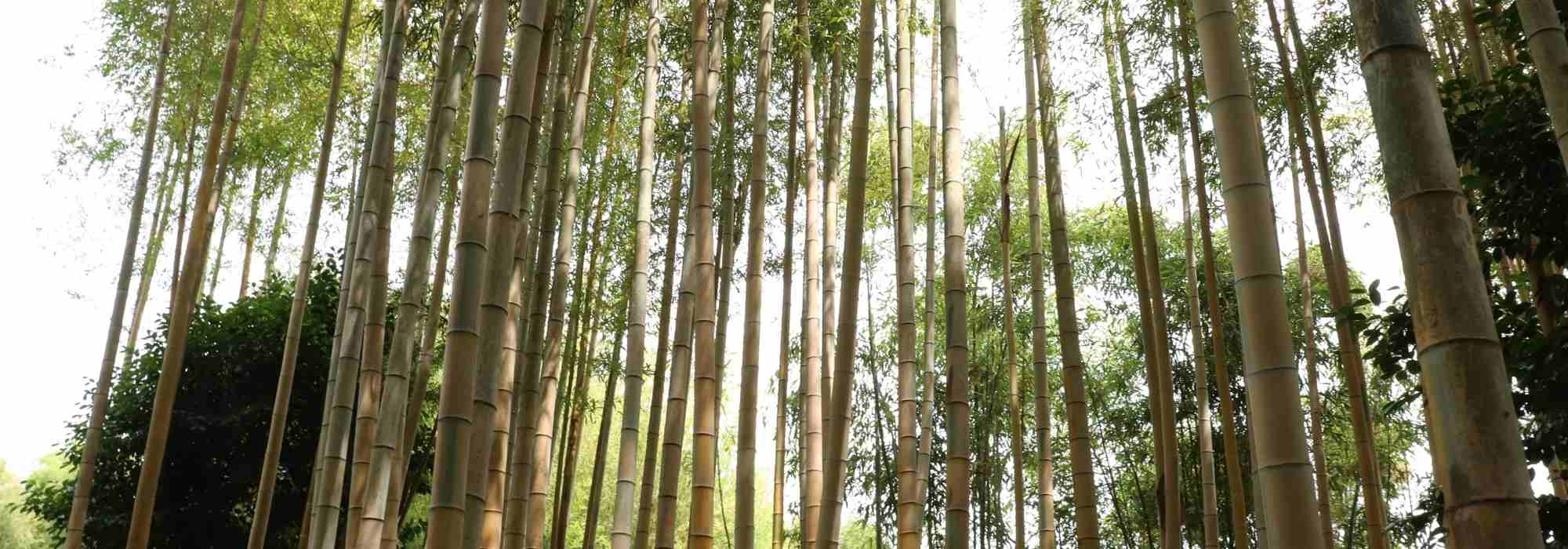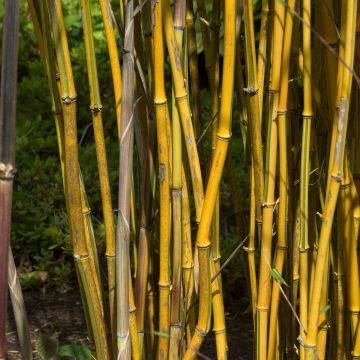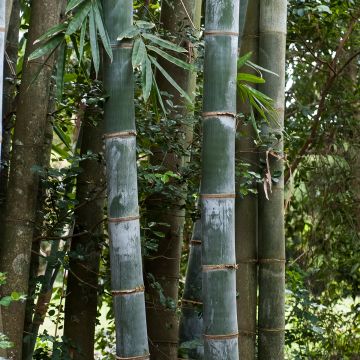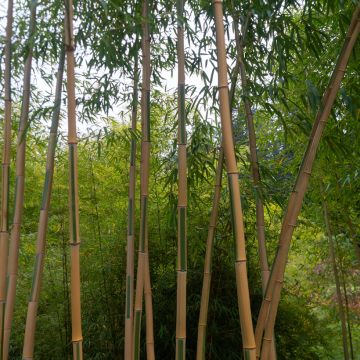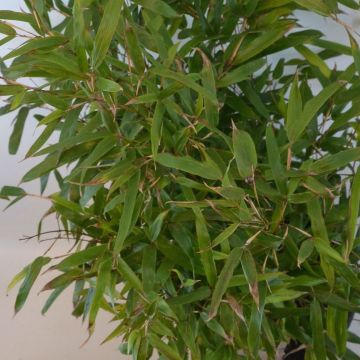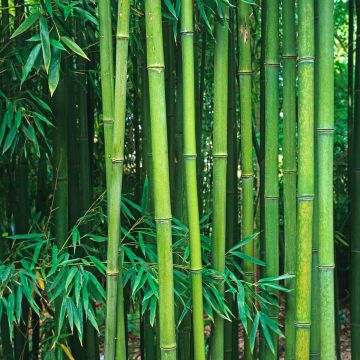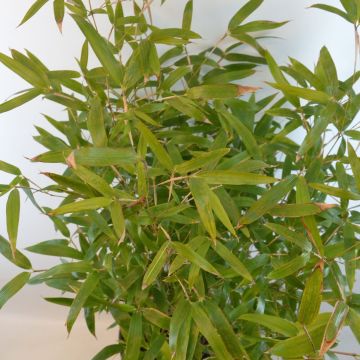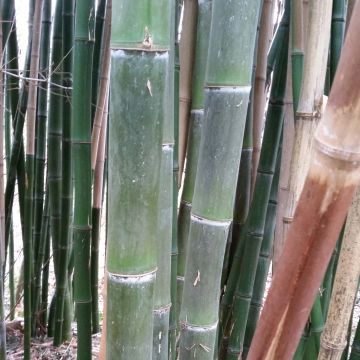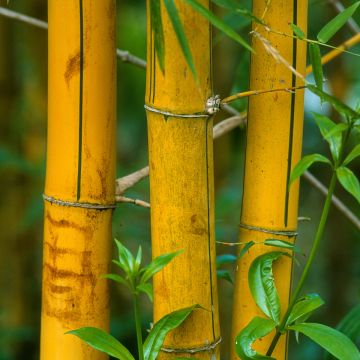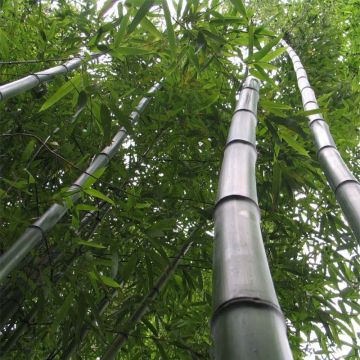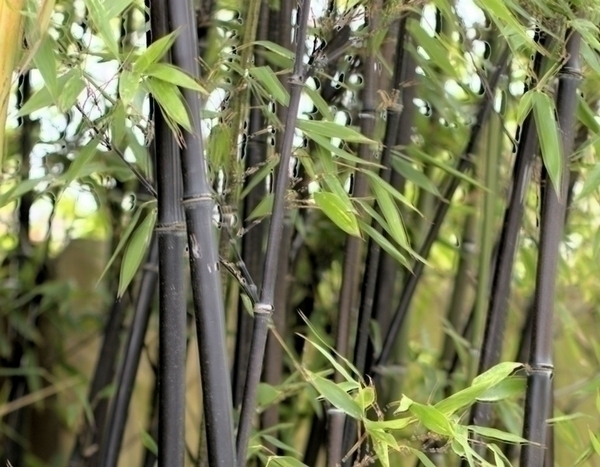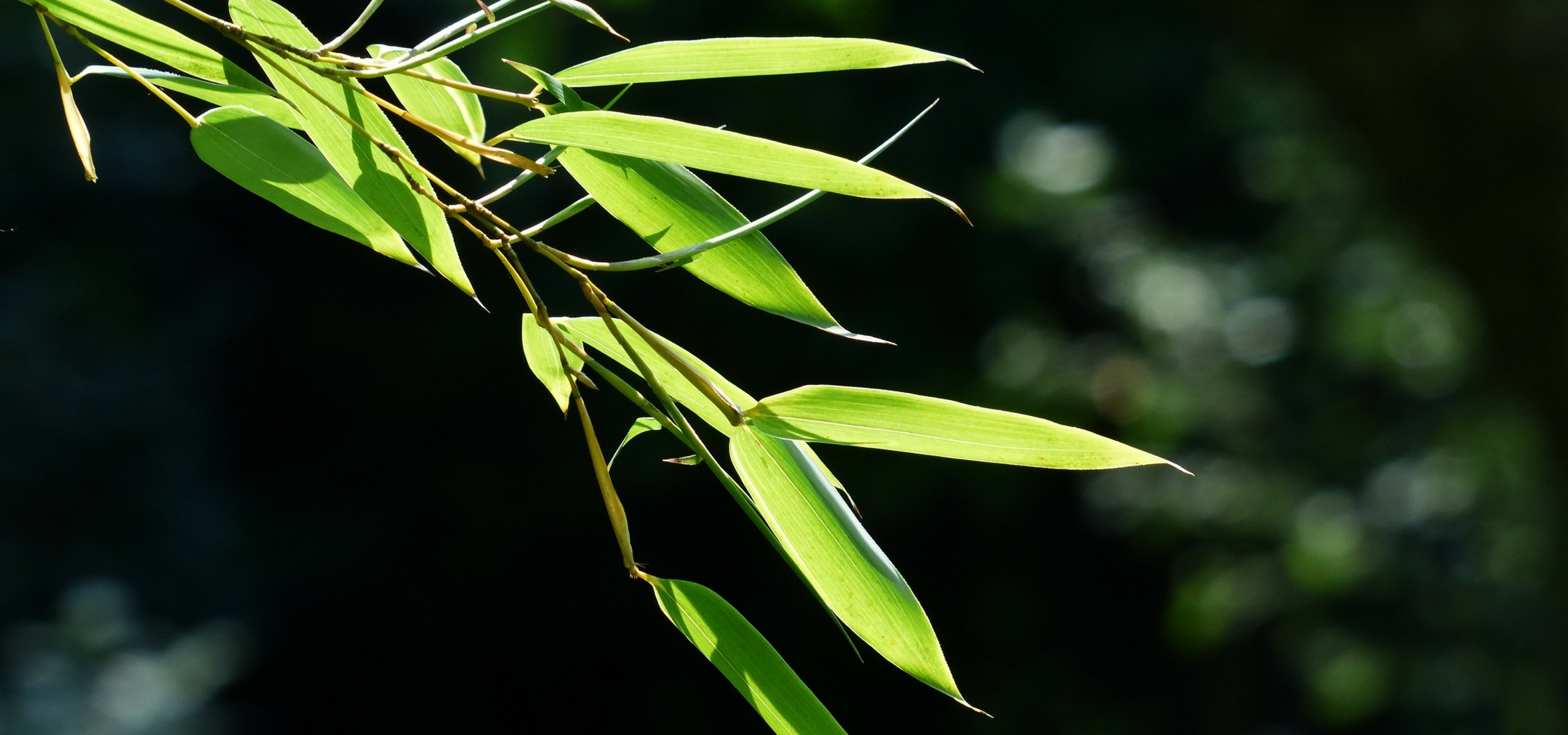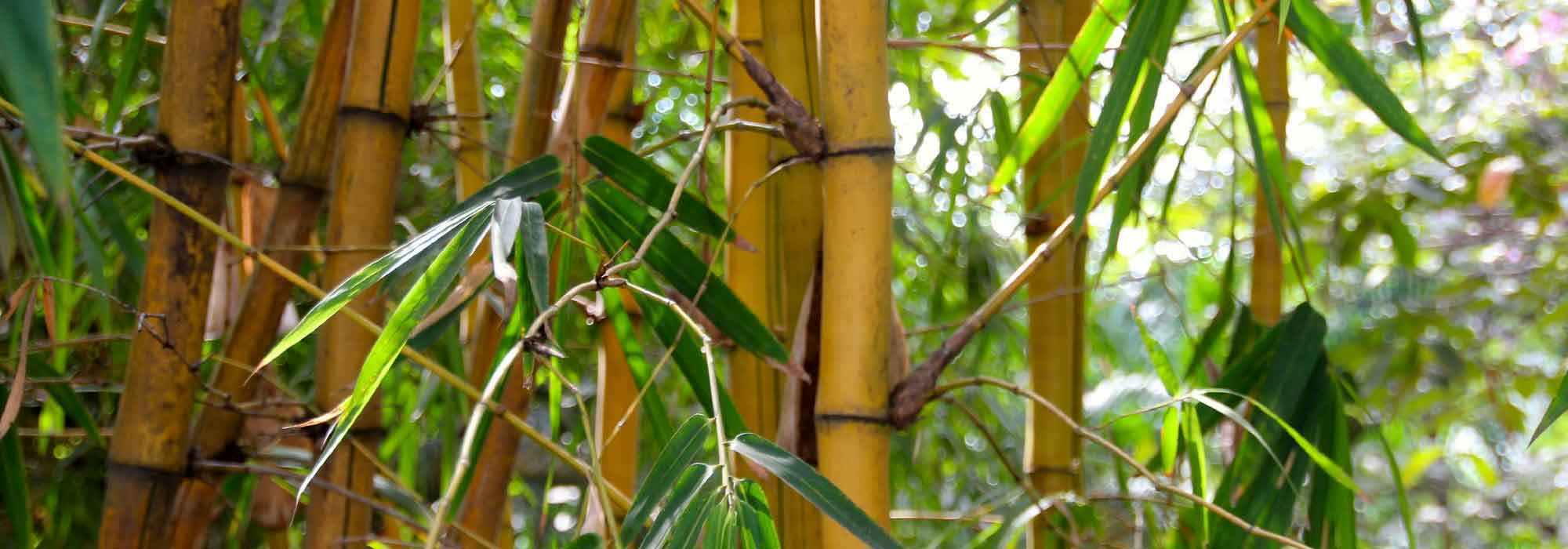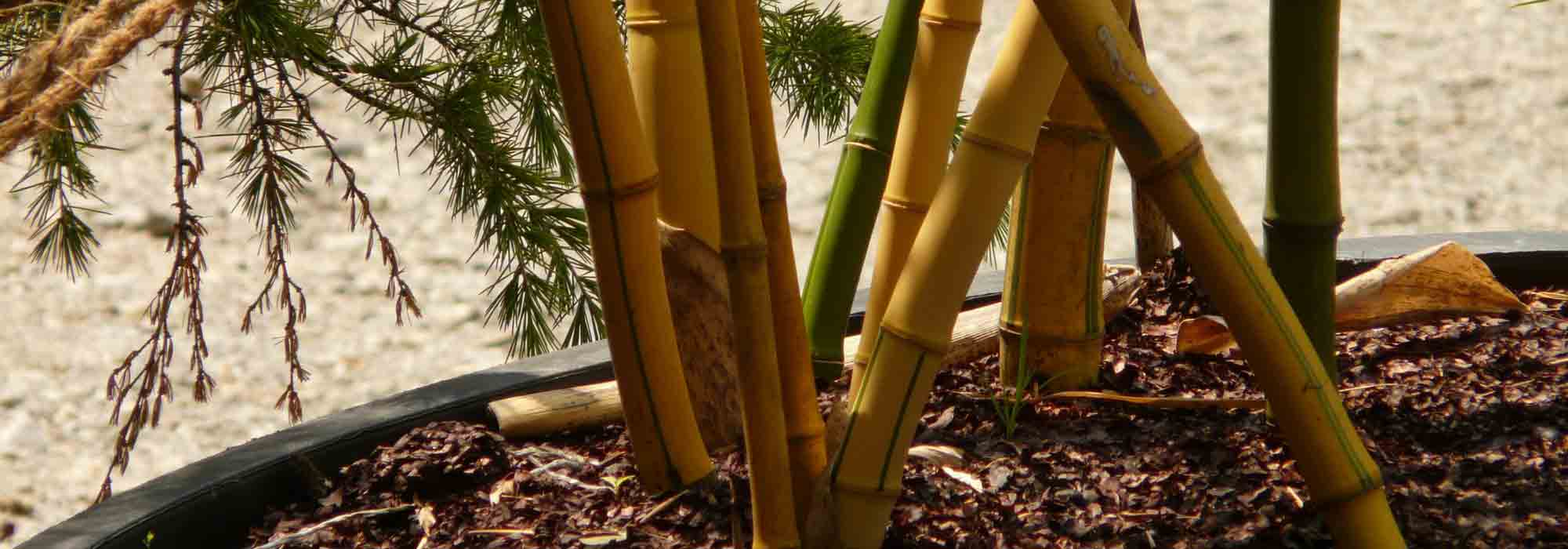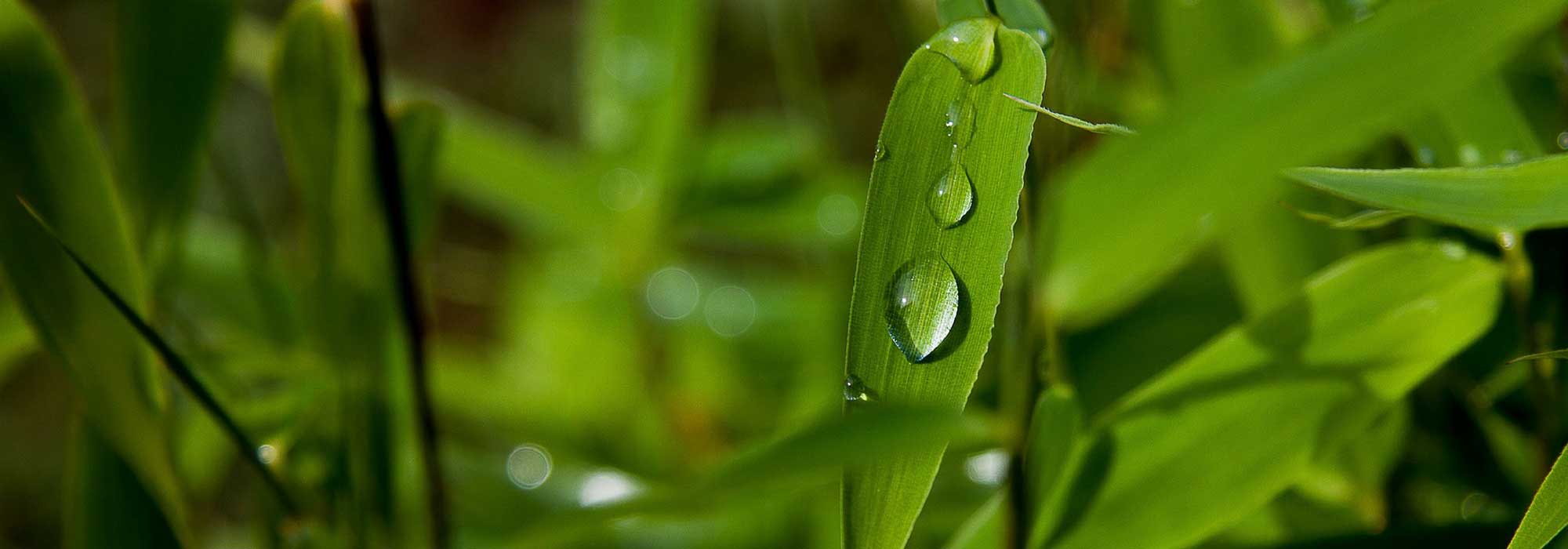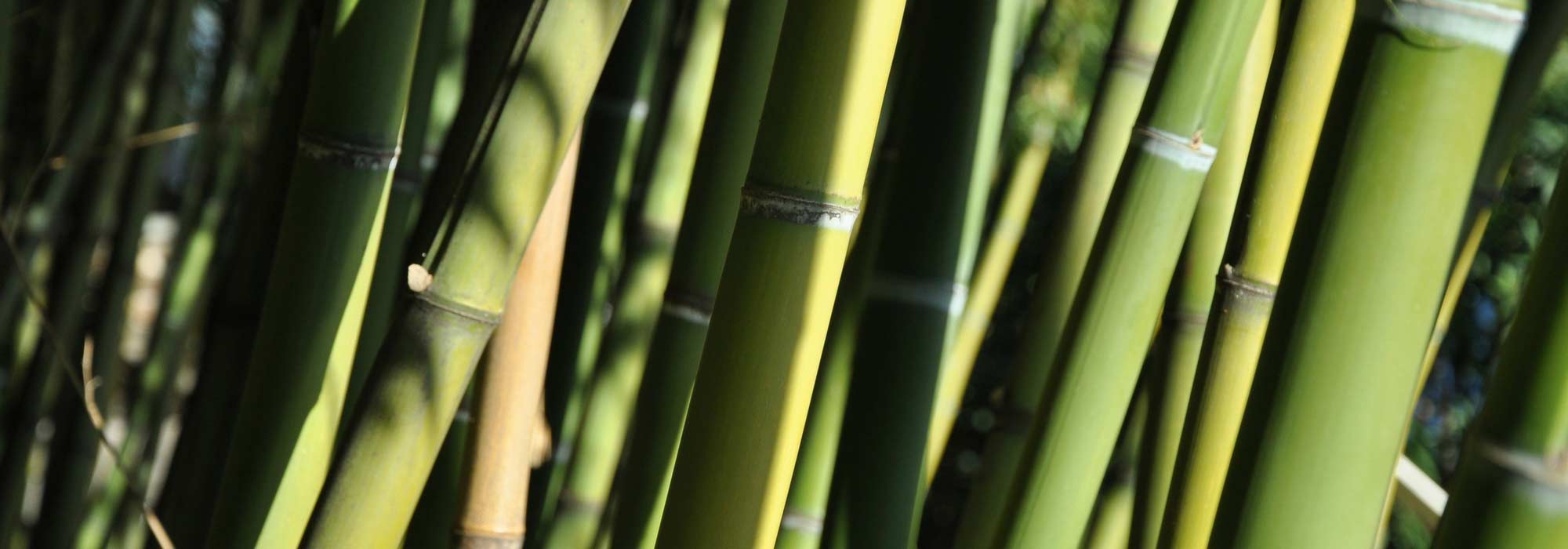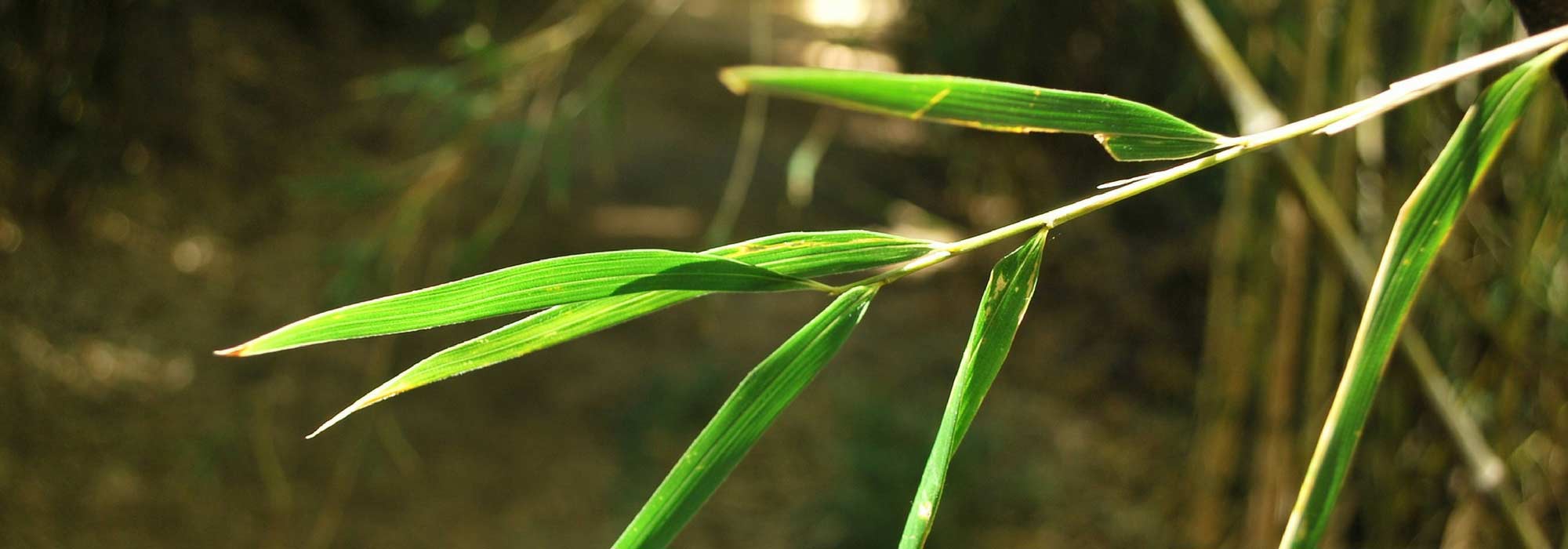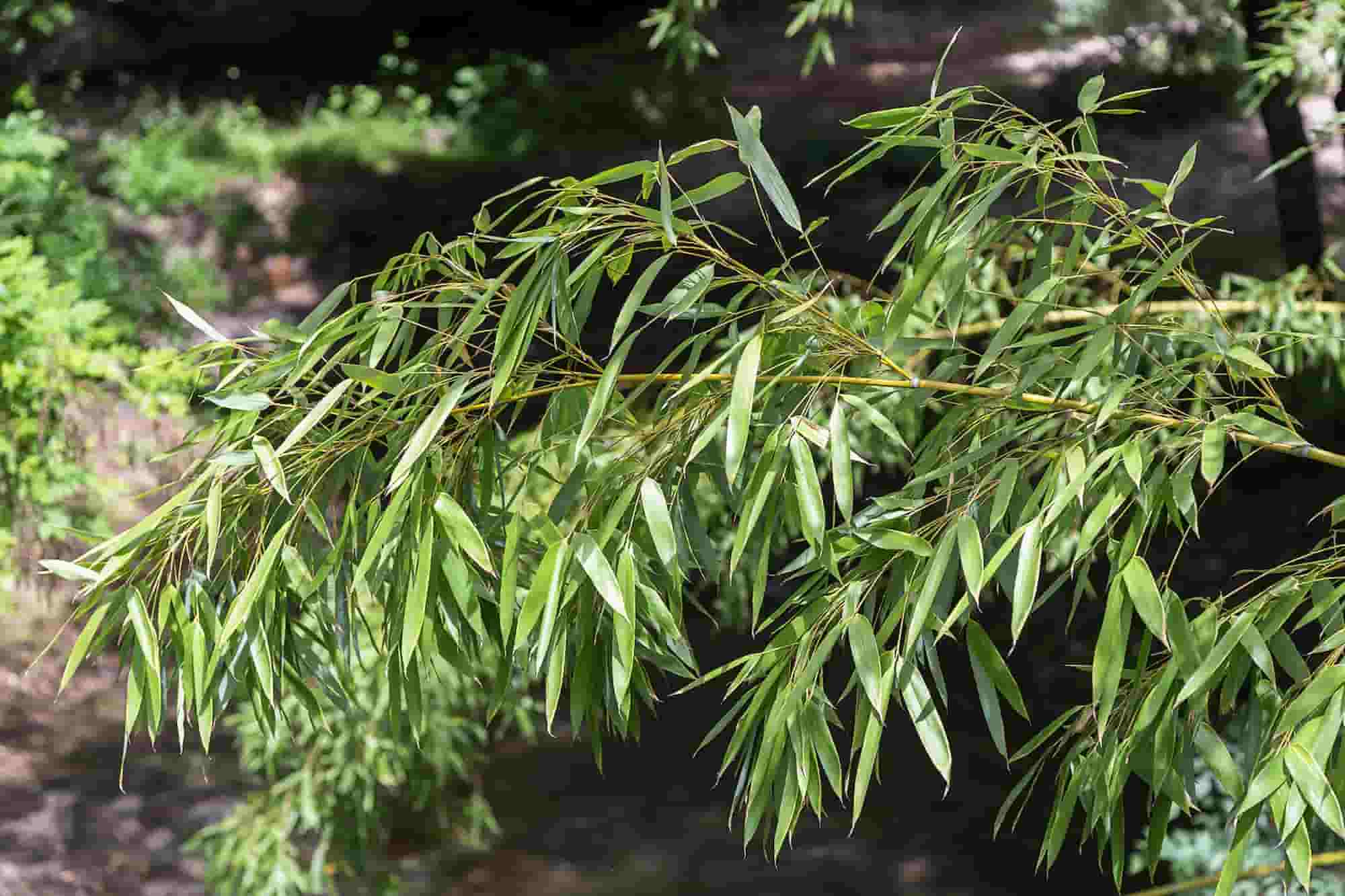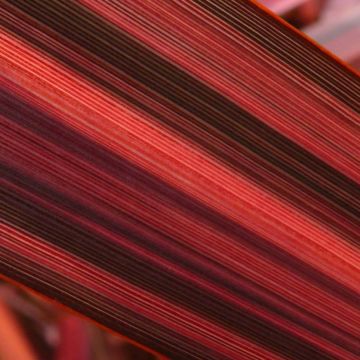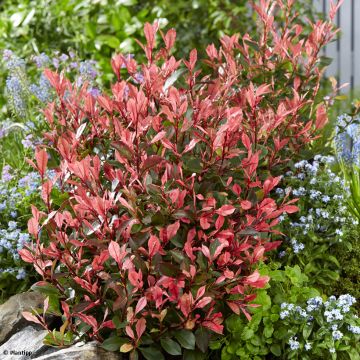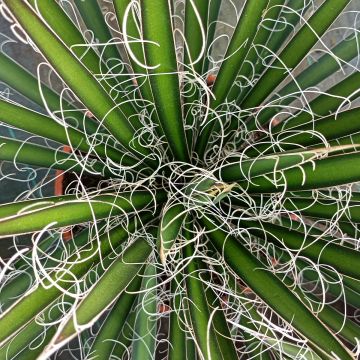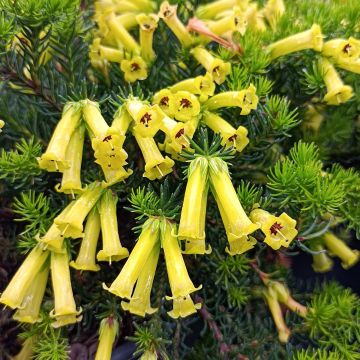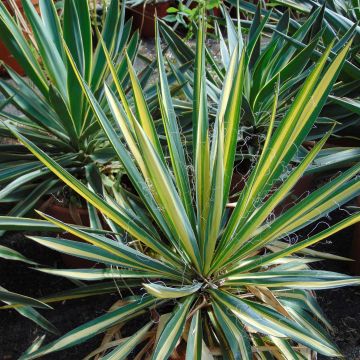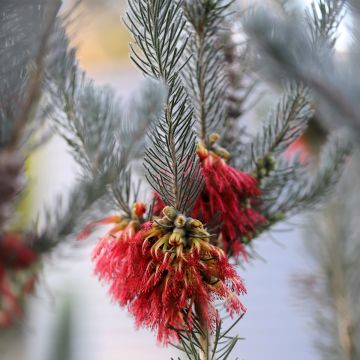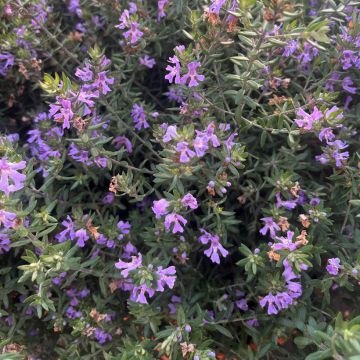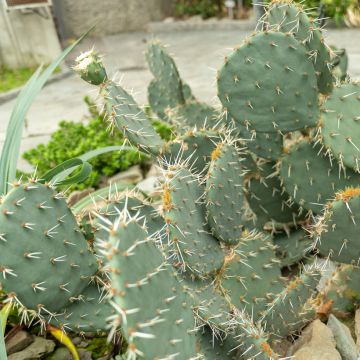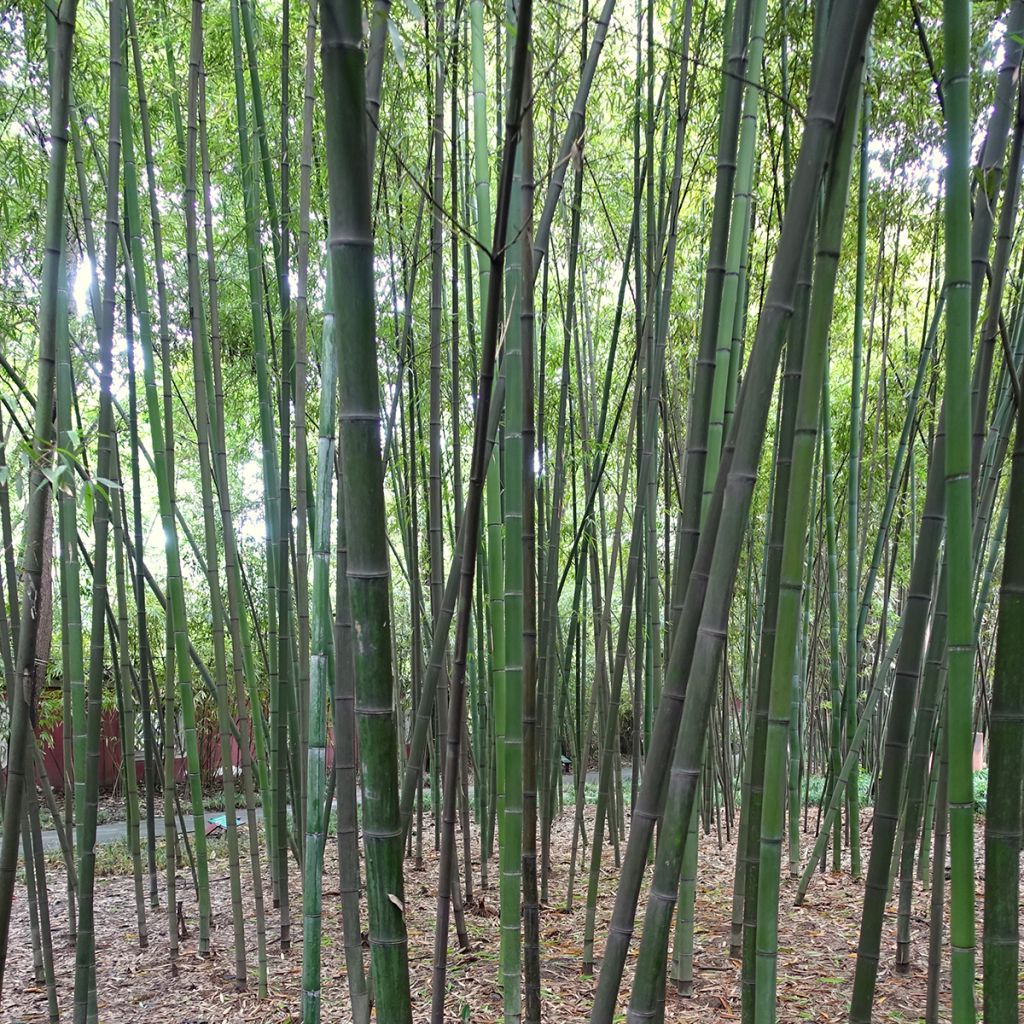

Phyllostachys glauca - Bambou moyen
Phyllostachys glauca - Blue Bamboo
Phyllostachys glauca
Blue Bamboo
Plant a bit yellow, dry stems except for one or two alive, very small young plant.
Carole, 30/09/2023
Special offer!
Receive a €20 voucher for any order over €90 (excluding delivery costs, credit notes, and plastic-free options)!
1- Add your favorite plants to your cart.
2- Once you have reached €90, confirm your order (you can even choose the delivery date!).
3- As soon as your order is shipped, you will receive an email containing your voucher code, valid for 3 months (90 days).
Your voucher is unique and can only be used once, for any order with a minimum value of €20, excluding delivery costs.
Can be combined with other current offers, non-divisible and non-refundable.
Home or relay delivery (depending on size and destination)
Schedule delivery date,
and select date in basket
This plant carries a 24 months recovery warranty
More information
We guarantee the quality of our plants for a full growing cycle, and will replace at our expense any plant that fails to recover under normal climatic and planting conditions.
Does this plant fit my garden?
Set up your Plantfit profile →
Description
Phyllostachys glauca will delight bamboo enthusiasts in search of originality. This species is distinguished by its young culms covered with an extremely ornamental bluish bloom. They form a subtle contrast with the older canes, which turn green, and the long, slender leaves, which are also a beautiful shade of green. Medium-sized, but occasionally growing larger, its upright habit makes it ideal for creating beautiful privacy screens of vegetation, in the background of a flower bed or garden. Hardy and adaptable to different types of soil as long as it has good drainage, it is a running species.
This bamboo belongs to the family Poaceae, or grasses. While some species can reach tens of meters in height and form canes as hard as wood, they are not trees but rather herbaceous plants. There are more than a thousand species, distributed across all continents except Antarctica.
Phyllostachys glauca is native to northern and eastern China, where it mainly grows in plains and valleys along the Blue (Yangtze) and Yellow rivers. Its Chinese vernacular name, Dan Zhu, means "pale bamboo" in reference to the glaucous appearance of the new shoots. The young canes are indeed covered with a bluish bloom, making them appear lighter than the mature canes, which turn green. Spring is the best time to admire the colour contrasts of this bamboo.
It generally grows to a height of 6 to 8m (20 to 26ft), with a width of 4 to 6m (13 to 20ft), but can exceed 10m (33ft) when it is well established. Therefore, this should be taken into account when choosing a location, especially since, like other Phyllostachys species, it is a runner. The very upright canes reach a diameter of about 5cm (2in) and bear beautiful foliage consisting of elongated leaves (up to 18cm (7in)) that are relatively narrow. Evergreen, shiny green on the upper surface and matte on the underside, they greatly contribute to the overall aesthetics of this bamboo, which seems to come straight out of a Chinese painting or Japanese print.
The upright habit of this species is well suited for creating hedges or privacy screens, or possibly clumps, but bamboos with a flexible and trailing habit (such as P. flexuosa) are better suited for this use. In addition to being ornamental, this bamboo is also edible: the young shoots (culms) are edible and of good taste (also for gastropods that do not hesitate to feed on them...).
Hardy to approximately -18°C (1°F), P. glauca is easy to grow as it is highly adaptable. It prefers fertile, rich, moist, but well-drained soils, and also tolerates relatively drier conditions. Ordinary soil with a neutral to acidic pH suits it well. It grows in full sun or partial shade and expands its width every year through its running rhizomes, which should be restricted in their development. To do this, it is necessary to dig all around the root ball when planting (leaving enough space to not overly restrict growth) and install a rhizome barrier.
Introduced to Europe in the early 1980s, this bamboo with its bluish culms has a strong ornamental interest, enriching the colour palette of Phyllostachys, alongside species with golden canes (P. aurea), black canes (P. nigra), green canes, striated canes... It will fit well in an Asian-inspired garden, as well as in a contemporary space, where its elegant design will make an impression. You can then associate it with other plants with distinctive silhouettes, such as Araucaria araucana, a conifer with tiered branches resembling pagodas, nicknamed "monkey puzzle" due to its sharp triangular needles, forming a geometric shell along the branches. To create a contrast in shape with the fine leaves of the bamboo, it will be interesting to plant foliage plants nearby, such as Magnolia delavayi, an unfairly overlooked Magnolia despite its magnificent spread of grey-green leaves, which will blend beautifully with the bluish shoots of Phyllostachys glauca.
Phyllostachys glauca - Blue Bamboo in pictures
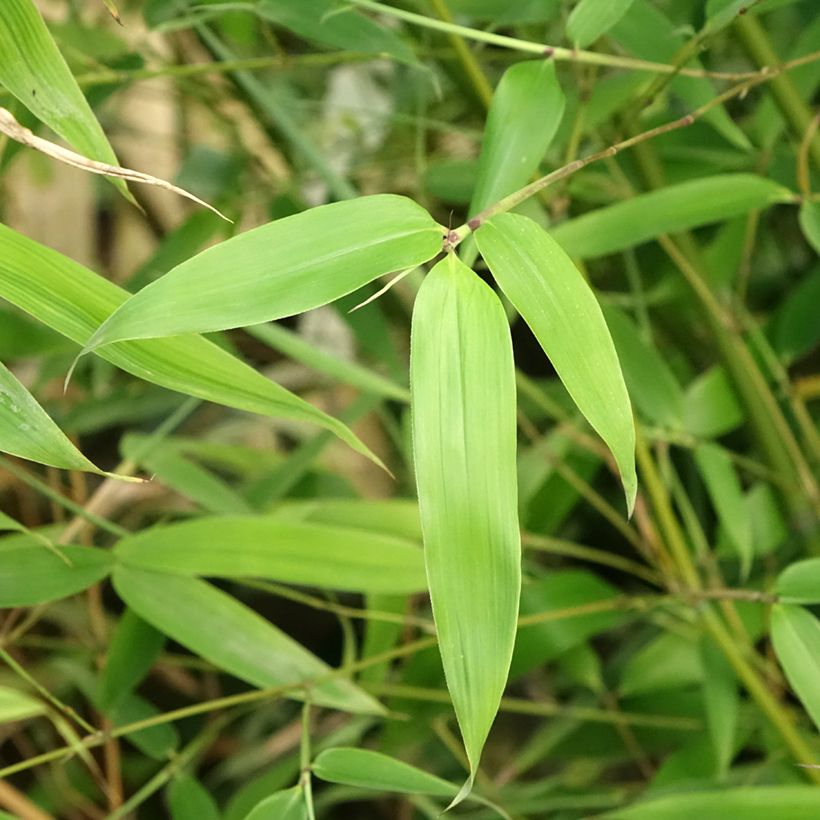

Plant habit
Foliage
Botanical data
Phyllostachys
glauca
Poaceae
Blue Bamboo
China
Other Phyllostachys
View all →Planting and care
Phyllostachys glauca is preferably planted in spring, or in autumn in southern regions. Prepare the soil in advance with organic amendment, as it appreciates fertile and humus-rich soils. The ideal period is between September and November, when the plant develops its rootstocks. Resistant to approximately -18°C (1°F), or even a bit lower once well rooted, it fears waterlogged soils in winter. It thrives in rich, deep, and compact soil, but well-drained, moist in summer without being waterlogged.
During planting, do not hesitate to thoroughly loosen the soil and moisten the root ball by soaking it in a bucket of water for 20 minutes. You can add well-decomposed compost that you will rake on the surface. Watering should be followed for at least the first year in open ground. The installation time may sometimes seem a bit long, don't panic!
Mulch the young stump and water generously; watch out for slugs that love young shoots. Apply nitrogen fertilizer in February-March, and then in July-August. Divide old clumps in spring, you can also thin them out by removing dry canes and those with a small diameter in autumn. Limit the proliferation of the spreading rootstocks of this bamboo by installing "anti-rhizome barriers" from the moment of planting, which are resin plates inserted vertically into the ground.
Planting period
Intended location
Care
Planting & care advice
-
, onOrder confirmed
Reply from on Promesse de fleurs
Similar products
Haven't found what you were looking for?
Hardiness is the lowest winter temperature a plant can endure without suffering serious damage or even dying. However, hardiness is affected by location (a sheltered area, such as a patio), protection (winter cover) and soil type (hardiness is improved by well-drained soil).

Photo Sharing Terms & Conditions
In order to encourage gardeners to interact and share their experiences, Promesse de fleurs offers various media enabling content to be uploaded onto its Site - in particular via the ‘Photo sharing’ module.
The User agrees to refrain from:
- Posting any content that is illegal, prejudicial, insulting, racist, inciteful to hatred, revisionist, contrary to public decency, that infringes on privacy or on the privacy rights of third parties, in particular the publicity rights of persons and goods, intellectual property rights, or the right to privacy.
- Submitting content on behalf of a third party;
- Impersonate the identity of a third party and/or publish any personal information about a third party;
In general, the User undertakes to refrain from any unethical behaviour.
All Content (in particular text, comments, files, images, photos, videos, creative works, etc.), which may be subject to property or intellectual property rights, image or other private rights, shall remain the property of the User, subject to the limited rights granted by the terms of the licence granted by Promesse de fleurs as stated below. Users are at liberty to publish or not to publish such Content on the Site, notably via the ‘Photo Sharing’ facility, and accept that this Content shall be made public and freely accessible, notably on the Internet.
Users further acknowledge, undertake to have ,and guarantee that they hold all necessary rights and permissions to publish such material on the Site, in particular with regard to the legislation in force pertaining to any privacy, property, intellectual property, image, or contractual rights, or rights of any other nature. By publishing such Content on the Site, Users acknowledge accepting full liability as publishers of the Content within the meaning of the law, and grant Promesse de fleurs, free of charge, an inclusive, worldwide licence for the said Content for the entire duration of its publication, including all reproduction, representation, up/downloading, displaying, performing, transmission, and storage rights.
Users also grant permission for their name to be linked to the Content and accept that this link may not always be made available.
By engaging in posting material, Users consent to their Content becoming automatically accessible on the Internet, in particular on other sites and/or blogs and/or web pages of the Promesse de fleurs site, including in particular social pages and the Promesse de fleurs catalogue.
Users may secure the removal of entrusted content free of charge by issuing a simple request via our contact form.
The flowering period indicated on our website applies to countries and regions located in USDA zone 8 (France, the United Kingdom, Ireland, the Netherlands, etc.)
It will vary according to where you live:
- In zones 9 to 10 (Italy, Spain, Greece, etc.), flowering will occur about 2 to 4 weeks earlier.
- In zones 6 to 7 (Germany, Poland, Slovenia, and lower mountainous regions), flowering will be delayed by 2 to 3 weeks.
- In zone 5 (Central Europe, Scandinavia), blooming will be delayed by 3 to 5 weeks.
In temperate climates, pruning of spring-flowering shrubs (forsythia, spireas, etc.) should be done just after flowering.
Pruning of summer-flowering shrubs (Indian Lilac, Perovskia, etc.) can be done in winter or spring.
In cold regions as well as with frost-sensitive plants, avoid pruning too early when severe frosts may still occur.
The planting period indicated on our website applies to countries and regions located in USDA zone 8 (France, United Kingdom, Ireland, Netherlands).
It will vary according to where you live:
- In Mediterranean zones (Marseille, Madrid, Milan, etc.), autumn and winter are the best planting periods.
- In continental zones (Strasbourg, Munich, Vienna, etc.), delay planting by 2 to 3 weeks in spring and bring it forward by 2 to 4 weeks in autumn.
- In mountainous regions (the Alps, Pyrenees, Carpathians, etc.), it is best to plant in late spring (May-June) or late summer (August-September).
The harvesting period indicated on our website applies to countries and regions in USDA zone 8 (France, England, Ireland, the Netherlands).
In colder areas (Scandinavia, Poland, Austria...) fruit and vegetable harvests are likely to be delayed by 3-4 weeks.
In warmer areas (Italy, Spain, Greece, etc.), harvesting will probably take place earlier, depending on weather conditions.
The sowing periods indicated on our website apply to countries and regions within USDA Zone 8 (France, UK, Ireland, Netherlands).
In colder areas (Scandinavia, Poland, Austria...), delay any outdoor sowing by 3-4 weeks, or sow under glass.
In warmer climes (Italy, Spain, Greece, etc.), bring outdoor sowing forward by a few weeks.






























